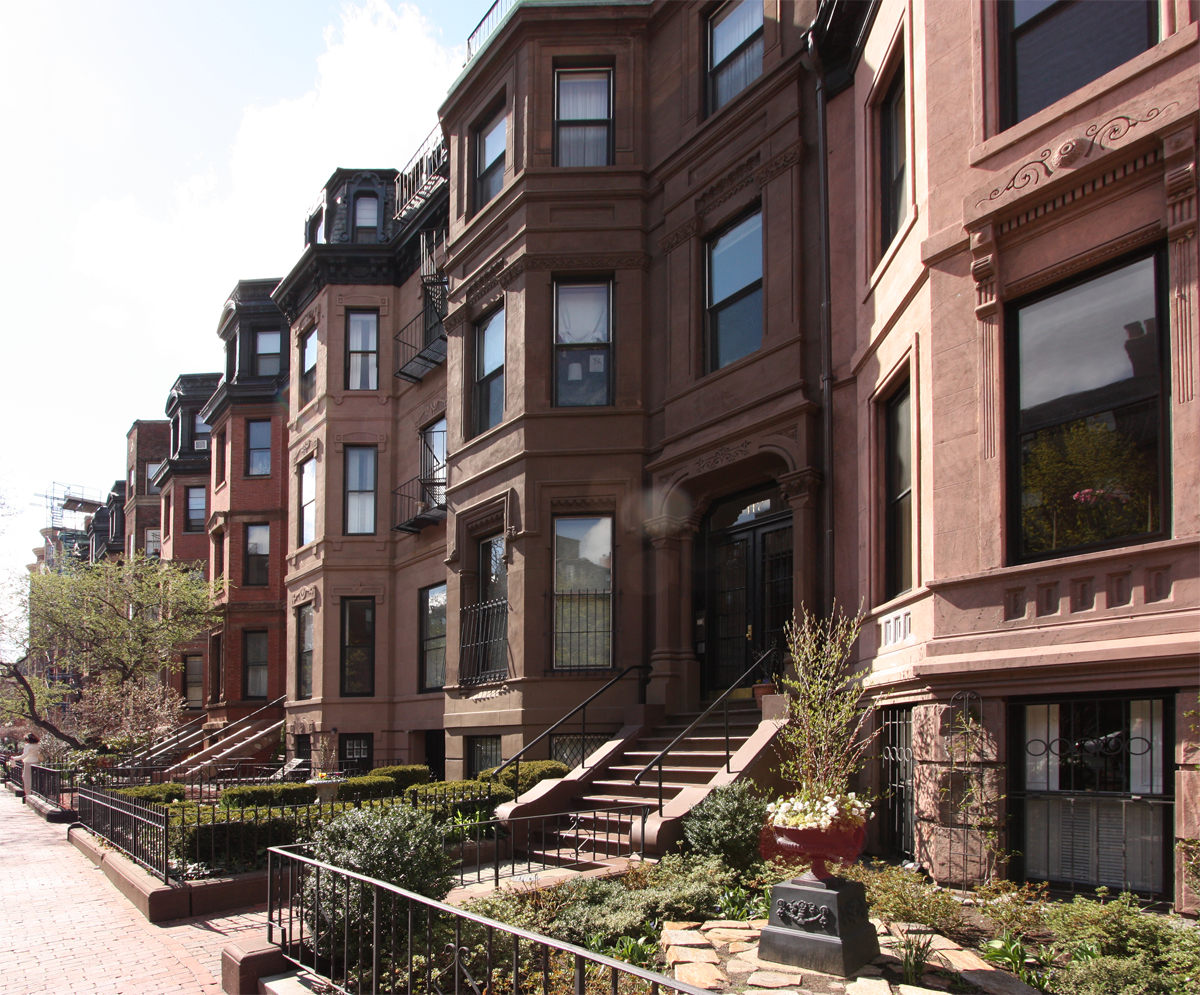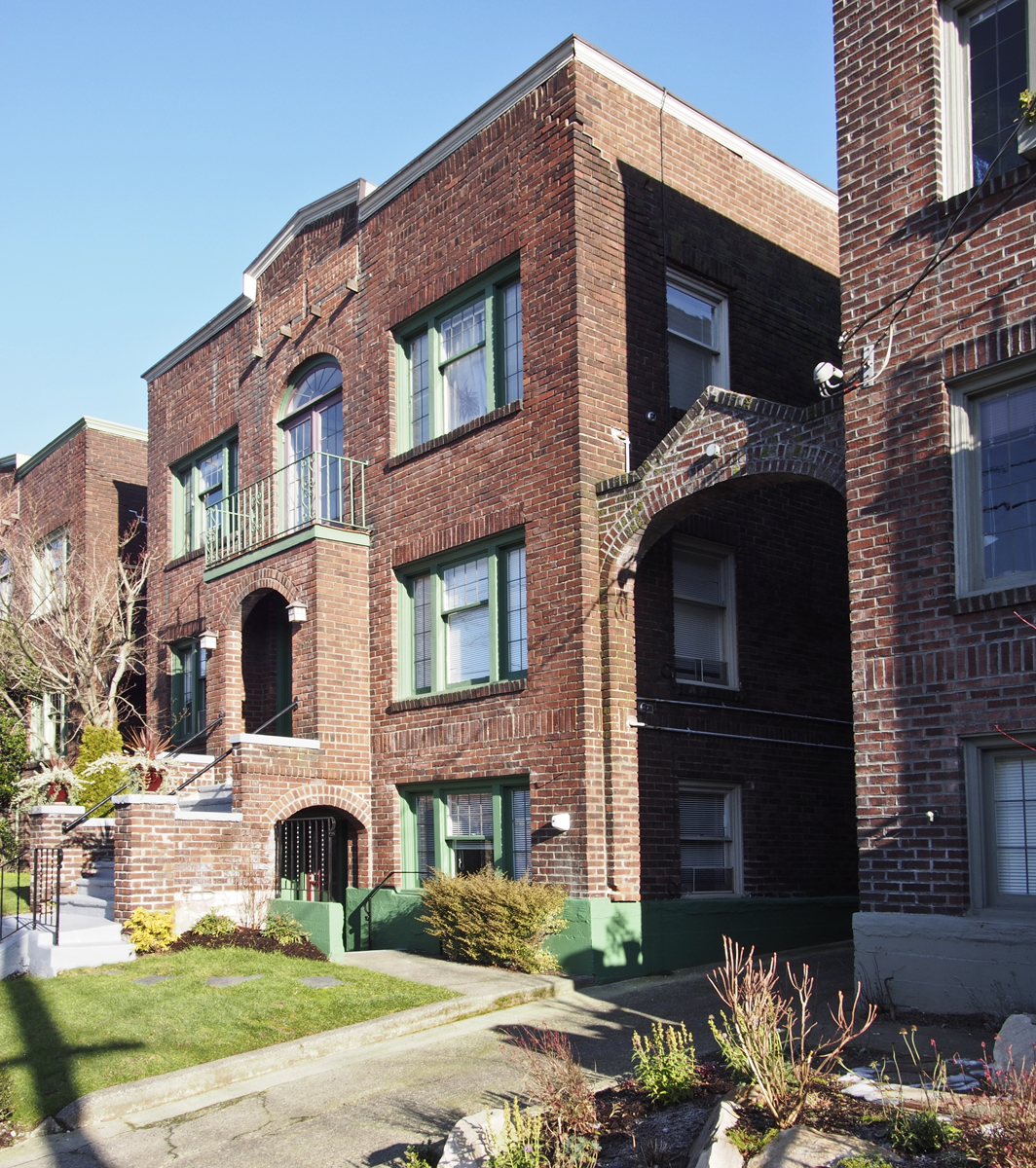In cities and settlements throughout the world the repetition of even a passing resemblance between neighboring structures has lent dignity to many an urban environment. Siena, Italy, comes to mind as an instance of the first order, where the matching architectural qualities of the city define its great beauty. Closer to home, the justly famous brownstones of New York (so-called because they were built of locally sourced, brown stone) are among some of the country’s finest residential neighborhoods.
Yet this repetition can be a double-edged sword. Our ubiquitous suburbia is the most banal of environments, with its cookie-cutter homes and shopping malls, endlessly repeating the same massing, materials, and details, resulting in pure misery.
On Capitol Hill, we too have instances of matching buildings, which run the gamut from those that enhance our neighborhood to those that tarnish it. 10th Avenue East, between Aloha and Roy Streets, holds forth a positive example of repetitive buildings. Architecturally, these facing comrades are virtually identical, with two on the western side of the street and four on the eastern side. I have long been a fan of these six buildings, not only because they are dignified little structures, but because their repetitive nature highlights their individual qualities.
Besides the match of overall form and materials, sameness is provided by the stairs, building set-backs, and the landscaping, much in the manner of the above-mentioned New York City brownstones. Yet unlike them, these masses are separate, allowing for additional shared elements to present themselves, such as alleyways, facing facades, and archways.
The fact that they share characteristics raises some questions that no one of them standing alone could: Were they built all at the same time? Are the floor plans identical? Was there a specific tenant in mind? Did the same developer build both sides of the street? The answers themselves are not really important. What matters is that the curious uniformity and repetition has some sort of story behind it, prompting questions that enrich one’s experience.
Further north on 10th Avenue East at the northern extremes of Capitol Hill, one finds a striking threesome of buildings that are identical in all but name. Much larger (individually) than the six to the south, these three provide an anchor to their section of 10th that confirms one’s presence in an urban neighborhood.
In addition to being rather handsome, well-proportioned buildings in their own right, the fact that they match, have the same negative spaces between them, and uniformly step down along 10th Avenue reinforces their presence, strengthening the streetscape and sense of place. Though the three lack the additional matching elements of the first example, their more cubic nature and repetitive fenestration lends them an equally strong character.
My favorite matching buildings on Capitol Hill are, actually, the least matching of all. The Buckley and Sheffield apartments, while not identical like the above apartments, convey a different and perhaps more powerful example of the matching theme through their sharing of a rather unique element: facing corner entries. There is even a third building nearby -- an odd-one out -- that still provides continuity with the others due to a similarly high level of material and detail.
Placed within a (very) broad historical context, I cannot help but to be reminded of one Rome’s most famous landmarks, the "twin" churches of Santa Maria in Montesanto (1662-75) and Santa Maria dei Miracoli (1675-79). Back in the day, this kind of intentional design – matching buildings to form an urban gateway – was novel and rather groundbreaking and required a big, urban type of thinking that had hitherto been rare. Unfortunately, such larger urban thinking in smaller environs such as Capitol Hill remains elusive, one reason why the Buckley and Sheffield merit special attention.
The mirrored pairing of the Buckley and Sheffield is but one of their notable attributes, as the buildings’ execution is a step above typical, Capitol Hill apartment building fare. Subtle brick patterning and terracotta trim indicate the higher aspirations held by the developer. A peek into the lobbies through the stained glass windows reveal that equal attention was paid to the interior environment. Though this pairing may be without precedent on the Hill, it is not without descendants.
Directly to the south of the Buckley is the Whitworth, whose detail and material exceeds the vitrual twins across the street. More questions arise – were these three planned together, and if not, which came first? Did someone anticipate the city arriving, and the rest of the surrounding single-family neighborhood never caught up, leaving these three urban pioneers stranded? Whatever the answer, the mere query suggests there may have been some sort of planning in the entire collection, of thought given to a neighboring context and a choice to create one anew -- indicating big ideas for this little intersection at East Harrison and 17th Avenue East.
Despite the above examples, such repetition, use of thematic elements, and uniformity of height, bulk, and scale, has led to disastrous results.. In the case of much suburban development the obvious reasons include the lower quality of design, including the lac of design of the larger environment inhabited by the structures. Probing more deeply, I would include quality of materials, the use of well-executed and scaled details and thoughtful material interfaces as contributors to Capitol Hill’s fine examples.. Compactness and density too, play a role in establishing the higher quality of Capitol Hill’s matching buildings; yet bad examples are present on the Hill as well, proving that there are no guarantees for success in design and that we are at least fortunate enough to have some good precedents to follow.













